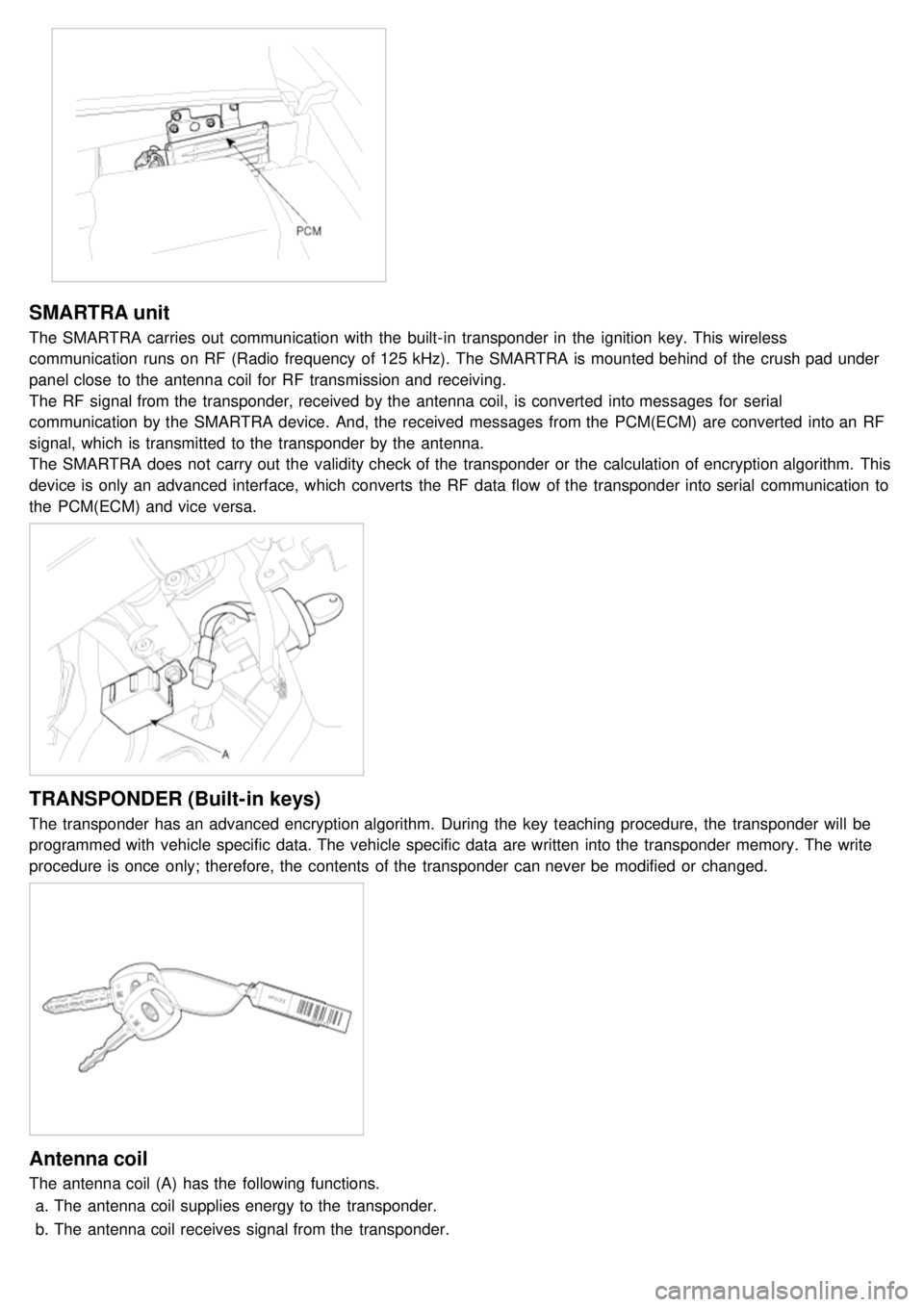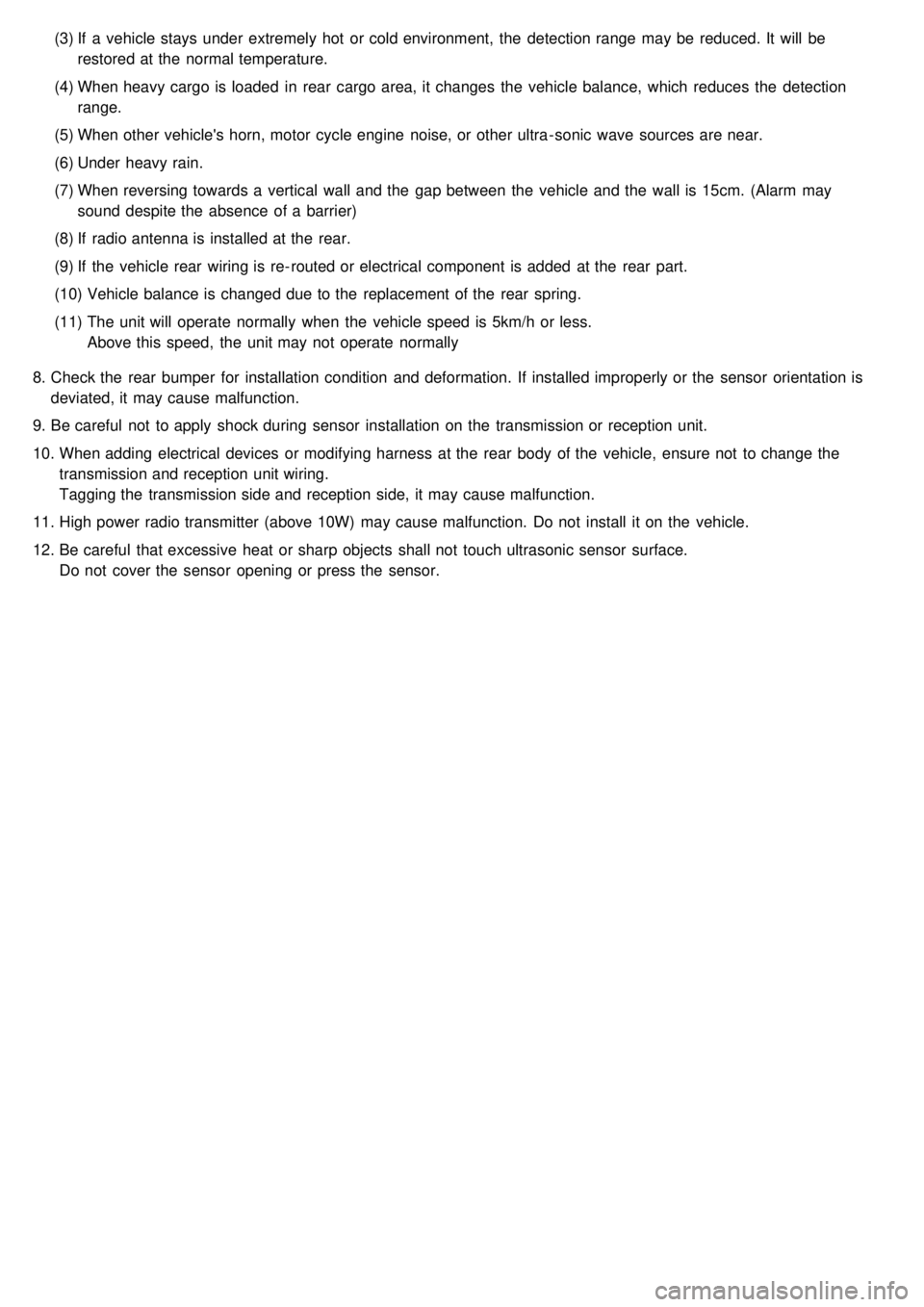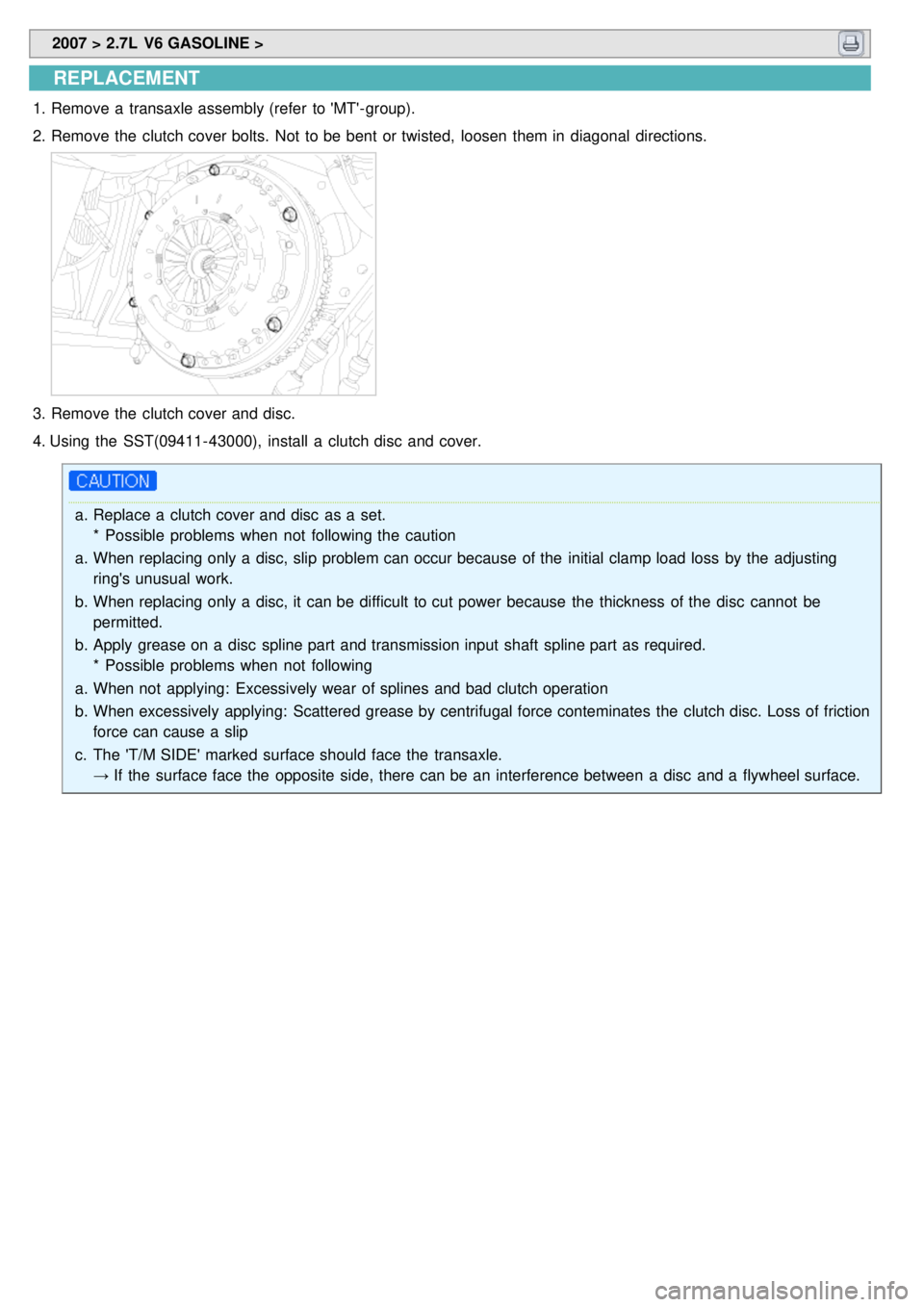Page 1504 of 1575

SMARTRA unit
The SMARTRA carries out communication with the built- in transponder in the ignition key. This wireless
communication runs on RF (Radio frequency of 125 kHz). The SMARTRA is mounted behind of the crush pad under
panel close to the antenna coil for RF transmission and receiving.
The RF signal from the transponder, received by the antenna coil, is converted into messages for serial
communication by the SMARTRA device. And, the received messages from the PCM(ECM) are converted into an RF
signal, which is transmitted to the transponder by the antenna.
The SMARTRA does not carry out the validity check of the transponder or the calculation of encryption algorithm. This
device is only an advanced interface, which converts the RF data flow of the transponder into serial communication to
the PCM(ECM) and vice versa.
TRANSPONDER (Built-in keys)
The transponder has an advanced encryption algorithm. During the key teaching procedure, the transponder will be
programmed with vehicle specific data. The vehicle specific data are written into the transponder memory. The write
procedure is once only; therefore, the contents of the transponder can never be modified or changed.
Antenna coil
The antenna coil (A) has the following functions.a. The antenna coil supplies energy to the transponder.
b. The antenna coil receives signal from the transponder.
Page 1538 of 1575

(3)If a vehicle stays under extremely hot or cold environment, the detection range may be reduced. It will be
restored at the normal temperature.
(4) When heavy cargo is loaded in rear cargo area, it changes the vehicle balance, which reduces the detection
range.
(5) When other vehicle's horn, motor cycle engine noise, or other ultra - sonic wave sources are near.
(6) Under heavy rain.
(7) When reversing towards a vertical wall and the gap between the vehicle and the wall is 15cm. (Alarm may
sound despite the absence of a barrier)
(8) If radio antenna is installed at the rear.
(9) If the vehicle rear wiring is re- routed or electrical component is added at the rear part.
(10) Vehicle balance is changed due to the replacement of the rear spring.
(11) The unit will operate normally when the vehicle speed is 5km/h or less.
Above this speed, the unit may not operate normally
8. Check the rear bumper for installation condition and deformation. If installed improperly or the sensor orientation is
deviated, it may cause malfunction.
9. Be careful not to apply shock during sensor installation on the transmission or reception unit.
10. When adding electrical devices or modifying harness at the rear body of the vehicle, ensure not to change the
transmission and reception unit wiring.
Tagging the transmission side and reception side, it may cause malfunction.
11. High power radio transmitter (above 10W) may cause malfunction. Do not install it on the vehicle.
12. Be careful that excessive heat or sharp objects shall not touch ultrasonic sensor surface.
Do not cover the sensor opening or press the sensor.
Page 1566 of 1575

2007 > 2.7L V6 GASOLINE >
REPLACEMENT
1.Remove a transaxle assembly (refer to 'MT'- group).
2. Remove the clutch cover bolts. Not to be bent or twisted, loosen them in diagonal directions.
3.Remove the clutch cover and disc.
4. Using the SST(09411- 43000), install a clutch disc and cover.
a. Replace a clutch cover and disc as a set.
* Possible problems when not following the caution
a. When replacing only a disc, slip problem can occur because of the initial clamp load loss by the adjusting
ring's unusual work.
b. When replacing only a disc, it can be difficult to cut power because the thickness of the disc cannot be
permitted.
b. Apply grease on a disc spline part and transmission input shaft spline part as required.
* Possible problems when not following
a. When not applying: Excessively wear of splines and bad clutch operation
b. When excessively applying: Scattered grease by centrifugal force conteminates the clutch disc. Loss of friction
force can cause a slip
c. The 'T/M SIDE' marked surface should face the transaxle.
→ If the surface face the opposite side, there can be an interference between a disc and a flywheel surface.
Page 1567 of 1575
5.Tighten the clutch cover.
TORQUE:
24.5~35.3Nm (250~360kgf.cm, 18.1~26.0lb - ft) (6EA)
When installing the clutch cover, tighten the bolts in diagonal directions not to be bent or twisted.
* Possible problems when not following
a. When tightening the bolt completely at a time: the clutch cover can be twisted and vibration can occur.
b. On vehicles with self adjusting clutches, it is necessary to follow this caution.
c. Not following tightening torque: There can be bad torque transmission in clutch and relaxation possibility of
bolts.
INSPECTION
1.Inspect diaphragm spring wear which is in contact with a concentric slave cylinder bearing.
Page:
< prev 1-8 9-16 17-24